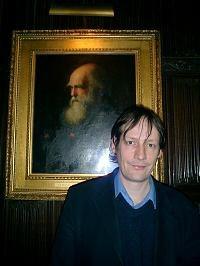Research
Our group studies how microbial pathogens such as bacteria and viruses are recognized by the pattern recognition receptors (PRRs) of the innate immune system and the signaling responses that are generated. We are especially interested in the Toll-like receptors (TLRs). The microbial molecules or PAMPs that are recognized by TLRs can be divided broadly into two groups, microbial lipids such as lipopolysaccharide (LPS) and non-self nucleic acids from bacteria, viruses and other pathogenic microorganisms. These PAMPs bind and activate TLRs by promoting the dimerization of two receptor ectodomains and this in turn causes the cytosolic Toll/IL1 domains (TIR) to associate, creating a signal induced scaffold for the assembly of a postreceptor complex. TLRs function not only in immune system cells such as macrophages and dendritic cells but also at many other sites that require immune surveillance such intestinal mucosae and airway epithelia.
We study the molecular mechanisms of signal transduction by theTLRs using the methods of biophysics, structural biology, single molecule imaging, molecular genetics and cell biology.
Publications
Valkov E, Stamp A, Dimaio F, Baker D, Verstak B, Roversi P, Kellie S, Sweet MJ, Mansell A, Gay NJ, Martin JL, Kobe B. Crystal structure of Toll-like receptor adaptor MAL/TIRAP reveals the molecular basis for signal transduction and disease protection. Proc Natl Acad Sci (USA), 2011 108: 14879-84.
Gay NJ, Gangloff M, & O'Neill LA What the Myddosome structure tells us about the initiation of innate immunity. Trends Immunol 2011 32:104-109
Ve T, Gay NJ, Mansell A, Kobe B, Kellie S. Adaptors in Toll-Like Receptor Signaling and their Potential as Therapeutic Targets. Curr Drug Targets. 2012 Oct 1;13(11):1360-74.
Gangloff M, and Gay NJ, Baseless assumptions: activation of TLR9 by DNA. Immunity 2008 28, 293–294.
Wang L, Gilbert R, Atilano ML, Filipe SR, Gay NJ, and Ligoxygakis P, Peptidoglycan Recognition Protein-SD Provides Versatility of Receptor Formation in Drosophila Immunity. Proc. Natl. Acad. Sci. (USA) 2008 105, 11881–11886
Gay N & Gangloff M Structure and function of Toll receptors and their ligands. Annu Rev Biochem 2007 76:141-165.



